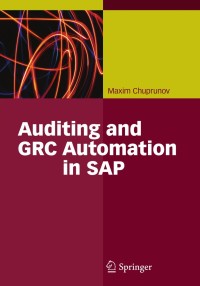Question
The company the team chose is Alphabet formally Google, and competitor is Yahoo You are a senior manager for the highly successful regional CPA firm
The company the team chose is Alphabet formally Google, and competitor is Yahoo
You are a senior manager for the highly successful regional CPA firm of Fine, Dee, Evah, Dense, LLP (Fine). Since its inception nearly 30 years ago, Fine's audit practice has exclusively consisted of auditing private and not-for-profit organizations. Recently, the partners have been considering an opportunity to audit a publically-traded company for the company your team has selected.
The primary reason Fine has not heretofore ventured into auditing public-traded companies is because of the potential risk and legal liability associated with auditing public companies. However, Fine has been a bit stagnant, business-wise, for the past few years, and some of the older and more risk adverse partners are beginning to retire. Consequently, the lure of the often-lucrative and prestigious opportunity to audit a public company has become to hard to resist, so the partners have decided to pursue the chance to audit this company.
On a beautiful early-september morning you are called into the senior partner's office and told you and your team have been selected to lead the first-ever effort to audit a public-traded company for Fine. You are honored, but also know auditing a public company is a bit more tricky and complicated than auditing private and not-for-profit organizations. Fortunately, the senior partner had considerable experience early in his career with another firm in auditing public companies and told you he would be with you all the way. Relieved, you asked him what he wanted you to do. He tossed you the most recent Form 10-K of the company you selected and gave you the following assignments:
Review and discuss the Form 10-K for the company you have selected. Create a report that will have 4 Sections.
Section 1. Initial Risk Assessment
Hint: The business and risk information is usually found in the first part of the risks, do not simply restate what is in the Form 10-K. Think like a senior manager at a CPA firm-what accounts (cash, A/R, Inventory,etc.) might be the most potentially risky and Why? For example an airline might not have the same inventory considerations found with a retail outlet like Wal-Mart.
Describe the following issues: Ethics and legal Issues
1. The ETHICS and sophistication of top management and cultures where the company operates.
2. Have there been significant auditing or accounting issues raised in the recent past?
3. Did they have disputes with their previous audit firm? 4. IS this company or industry particularly susceptible to lawsuits or other legal proceedings?
Evaluate the regulatory and compliance and requirements of this company. 1. The compliance requirements of this company.
2. is it subject to a high-level of governmental regulation?
3. Are employees unionized? Are they generally compliant with Sarbanes-Oxley and other regulatory rules?
Section 2. Analytical Procedures
Based on Table 8-1 Examples of Planning Analytical Procedures and the sections on Analytical Procedures, select three ratios ( current, ratio, Inventory turnover, debt to equity, return on assets). calculate these ratios for the most recent year and compare the results.
Write a 350 to 525 word analysis of your findings
Section 3. Materiality and Risk
The senior partner wants to confirm your understanding of key concept. Summarize each concept 90 to 175 words each.
materiality misstatement audit risk audit risk model inherent risk. relationship of risk to audit evidence
Step by Step Solution
There are 3 Steps involved in it
Step: 1

Get Instant Access to Expert-Tailored Solutions
See step-by-step solutions with expert insights and AI powered tools for academic success
Step: 2

Step: 3

Ace Your Homework with AI
Get the answers you need in no time with our AI-driven, step-by-step assistance
Get Started


